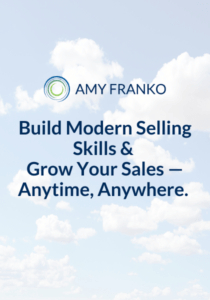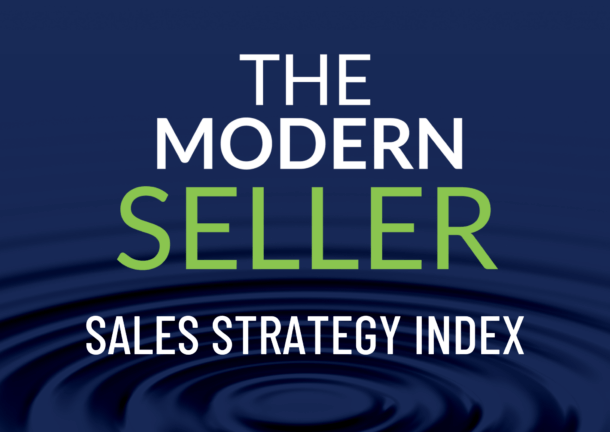There’s a concept in gaming called goal-setting theory, where a player working to win the game has greater success when there are goals involved, and when the goals have several core elements. Clear rules, realistic time horizons, clarity and specificity, the right level of challenge, and incremental success milestones. So much of this applies to sales growth goals– there’s a competitive, game-like quality to setting and achieving success.
In sales, sometimes the game parameters are such that the sales growth goals are long odds, and in certain cases unattainable. Consider these sales scenarios.
- Hero to zero. The year where a sales professional lands the biggest, one-time deal of his or her career and achieves 200% of quota. They’re the rock star, the hero. The following year comes a quota so large that the odds of duplicating it are minimal without a deal of the same magnitude, either with the same client or with a prospect. They’ve now landed toward the bottom of the leader board, the zero.
- M&A events. Another scenario is a merger, acquisition, or investment event that brings a new board of directors or new leadership. They set growth goals that are significantly beyond what the company has ever attained.
- Product launches. There might be uncertainty as to whether the product is ready for market, or there are unknowns about the available market ready to buy. Multi-million-dollar quotas have been assigned to sales professionals without past context or previous data with which to compare.
- Analyst or shareholder influence. This tends to play out more in publicly traded companies. An outside influence drives which products, services, or revenue models get the most focus; pulling those levers can have significant consequences for achieving growth goals.
The common theme with each of these scenarios? They’re missing the core elements of the game when it comes to effective and sustainable sales goals. There’s an environment now where the goals are perceived as unattainable and, in some cases, actually are unattainable. When something feels or is unattainable, it affects morale, effort, and ultimately results. When taken to extremes the impacts on sales culture can be significant enough that organizations can take years to recover.
Strategies for Sales Leaders and Sellers to Set Sales Growth Goals
How do we strike the right balance? We want assertive growth and stretch goals where they make sense. But we also want to avoid a toxic sales culture that erodes the very growth we’re looking to accomplish. Below are several strategies modern sellers and sales leaders can use to set growth goals, to stay focused, and keep a positive outlook in the face of long odds growth goals.
1. Set sales growth using rolling average strategy.
This involves looking at the last three years to determine the company’s average or annualized growth. Growth can be more clearly assessed through past data. My clients using this strategy excluded years that were outliers and especially those where COVID had large impacts (positive or negative). There are three advantages to this strategy: 1) it often serves as a good reminder of past actuals; 2) it’s a sales acumen exercise, especially for those new to selling or new to your organization; 3) it highlights cross-sell, upsell, and other expansion opportunities.
2. Avoid the “square peg round hole” approach.
Look beyond a generalized application of quota and assess sales growth with a more focused approach. For example, a solution may have niche applications that aren’t a fit for the company’s full client set. But too many times blanket quota is assigned, creating long odds in those verticals where the solution isn’t a strong match. Instead, a leader may assign a sales growth quota for that solution in verticals where it has the best fit. The sellers working in other verticals can apply their focus to other solutions that are the best fit for their sales scenarios.
3. Consider multiple growth goals.
This strategy works well with the rolling average exercise because once the baselines are understood, it provides a more focused and intentional approach to goal setting. One approach is to use forecast, target, and stretch metrics. One client I worked with identified their rolling averages by service lines, and from there set three milestone goals. A forecast goal that represented 5-10% growth, a target goal that represented 10-15% growth, and a stretch goal that represented 20%+ growth. They identified the core clients and verticals where they could find the best growth (stretch), while still maintaining those that were saturated (forecast). It became clear where the company deemed growth to be, and where sales managers and sellers should focus their sales prospecting and pipeline growth efforts.
4. Focus on the controllables.
This last strategy involves a seller’s individual outlook and approach, which play pivotal roles in the face of long odds goals.
- Take sales responsibility. Objective Management Group is a leading researcher in sales effectiveness assessments; they’ve designed and measured a finding called sales responsibility. Simply put it means this: in the face of adversity does the seller look inwardly, focusing on how they can continually learn and improve? Or does the seller look outward and blame those factors (like the economy, an unattainable growth goal, pricing problems, or supply problems)? Those who succeed despite long odds have a high degree of sales responsibility.
- Focus on quality activity. Quality activities and quality opportunities are still the foundational elements of sales growth. What are the quality activities required on a monthly, weekly, and daily basis? What makes for a highly qualified opportunity? Pursue those activities and opportunities and sellers will improve their odds of success. Anything else is simply time wasted and a recipe for burnout.
- Internal language. Sellers, never underestimate the power of who you invest your time with and the language you use with yourself. While there’s nothing wrong with venting from time to time, watch where venting becomes unproductive and toxic. Sales leaders, your approach matters too. How you present growth goals, how you manage team chemistry, and how you keep your team focused on the right activities are difference makers in both the short-term and the long-term.
What I’ve experienced in my career as a professional seller and entrepreneur is the excitement of sales — the possibility of growth through winning clients, and ultimately helping them create growth. Sales organizations that strike the balance between assertive sales growth and productive sales culture will win the game.
Need Help Reaching Sales Goals? Contact Amy Franko.
Amy Franko is the leader in sales strategy and sales leadership coaching, helping you to design best-in-class sales programs that accelerate growth. To significantly improve the outcomes of your sales strategy, let’s schedule a conversation. Don’t let your competition get an advantage. Contact us to schedule a conversation with Amy.



 Our Strategic Selling signature sales training program is now available online. This online sales learning program is ideal for professional services and B2B sales. Get started with 2 free lessons.
Our Strategic Selling signature sales training program is now available online. This online sales learning program is ideal for professional services and B2B sales. Get started with 2 free lessons.